The West Highland Way is probably the best known long distance footpath in the UK being walked by between thirty five and forty thousand people each year. It’s a fantastic introduction to walking in Scotland passing lochs, mountains and moors and giving a real flavour of the Scottish landscape. I have worked on a dozen Ways now as either a walking guide or a support driver and in this article I am going to tell you about a few of the lesser known highlights that many people walking it may miss out on!
CRAIGALLIAN FIRE MEMORIAL
You’ll barely feel as if you’ve started your WHW journey when you come across this historically significant memorial at the head of Craigallian Loch. During the 1920s and 1930s a fire was kept permanently alight and acted as a beacon for refugees from industrial Glasgow seeking some solace in the countryside. As well as the warmth of the fire there was a cup of tea, perhaps some food and certainly plenty of political chatter. It was here that many of the pioneers of Scottish outdoor access fulminated and developed their ideas and many firesitters went and served with the International Brigade fighting fascists in the Spanish Civil War. The memorial was sculpted by Tim Chalk with the words of the Craigallain fire chant etched in a circle around the flame.
GLENGOYNE DISTILLERY
Whilst this distillery is technically not on the Way itself, it’s only a short signposted detour from the path and the whitewashed building nestled beneath the peak of Dumgoyne is a clear and obvious landmark. The Distillery runs tours (pre-booking advised as it’s very popular) and has an extensive shop showcasing the fruits of nearly two hundred years of legal distilling (apparently the tradition goes back further but not necessarily legally….). I recommend the 12 year old single malt!
THE CLACHAN INN, DRYMEN
The subject of “oldest pubs” is always a hotly debated one, but The Clachan Inn was licensed in 1734 and therefore has a very strong claim to the title in Scotland. The first licensee of this characterful pub was one of the sisters of Rob Roy McGregor, the famed cattle rustler! The food here is cracking (the Cullen Skink is my favourite) and perfect for the end of the first day on the Way and the bar is generally lively and convivial, recommended!
BUCHANAN CASTLE
If you still have a bit of energy left in the legs on reaching Drymen, a visit to Buchanan Castle is worth the wander. Built in the mid-nineteenth century for the Fourth Duke of Montrose it has sadly fallen into disrepair now but has a distinctly haunted, Gothic feel. Throughout it’s history it has been a hotel and a military hospital that housed Rudolf Hess, Hitler’s deputy. Since the roof was removed in 1954 to avoid taxes it has slowly decayed but represents a picturesque ruin when viewed from a safe distance.
HIGHLAND BOUNDARY FAULT
As you stand on Conic Hill (weather permitting) admiring the spectacular views across the Southern end of Loch Lomond it’s impossible not to notice the alignment of the islands of Inchcailloch, Torrinch, Creinch and Inchmurrin as they spread across the loch. These islands sit on a geological fault line that separates the Lowlands to the south from the famed Highlands to the north. The rocks to the north and west are Precambrian and Cambrian metamorphic rock whilst to the south and east the rock is Devonian and Carboniferous sedimentary Sandstone.
TOM WEIR STATUE
The statue of Scottish naturalist Tom Weir was unveiled in 2014 on what would have been his one hundredth birthday. Weir was a notable journalist and television presenter with a real enthusiasm and passion for the wild countryside of Scotland. The sculpture was made by Sean Hedges-Quinn and is famous for Weir’s bobble hat which is often augmented by real ones throughout the year!
NATIONAL PARK MEMORIAL SCULPTURE
Situated in the car park at Rowardennan and designed by Doug Cocker this beautiful granite sculpture symbolises the designation of the area around Ben Lomond, the most Southerly Munro, as a war memorial. The park is dedicated to the memory of those soldiers who died during the two World Wars. On a clear day there are perfect views down the loch to Ben Vorlich in the distance.
ROWARDENNAN HONESTY BOX
Just after the sculpture and at the foot of the path leading up to Ptarmigan peak is (usually) the finest honesty box on the WHW. I love that the Way has a number of these en route but this is in my experience the best and usually well stocked with cakes, drinks and savoury snacks for the start of the long and challenging day along the north shore of Loch Lomond. It says a lot about the intrinsic goodness of people walking the Way that these little havens exist and are not exploited! Please help keep it that way.
BILL LOBBAN MEMORIAL
Just before the bridge and extremely remote cottage at Caithness sits a small stone cairn and a plaque to the memory of Bill Lobban who drowned in 1975 in the loch. Bill was a teacher walking with some of his students who fell into the burn at Caithness. Going in to the water after them in an attempt to rescue them Bill was drowned and the students were rescued by a crofter in a boat. A sad story of real heroism.
DOUNE BYRE BOTHY
A beautifully situated bothy in an old outbuilding belonging to the sadly very dilapidated farm ruin next to it. It has a fireplace and quite a bit of space inside and a good sized sleeping platform. As will all bothies responsible usage is key with particular regard to toileting and firewood gathering. The Mountain Bothy Association has done a great job in maintaining this shelter. It can be very busy during peak season.
FERAL GOATS
The area towards the north of Loch Lomond is home to a sizable population of goats living wild in the woodland and on the slopes of the surrounding hills. Whilst there are reports of Feral Goats in the Inversnaid area as long ago as the 1700s the origins of the current herd are thought to be from the early twentieth century. Estimates of numbers are around three hundred and I have seen them all the way from Inversnaid to Beinglas. Some of the males have magnificent horns and splendid shaggy coats. You can often smell them even if they can’t be seen !
THE DROVERS INN, INVERARNAN
Named for that particularly hardy breed of men who moved the cattle around the Highlands and down to market this pub (along with Beinglas campsite) just about solely constitutes Inverarnan. It’s a half mile or so off the Way but worth a visit if you have time particularly if the weather is bad and the fires are roaring in the hearths. In addition to it’s claim to be the most haunted inn in Scotland, it is also a taxidermists delight and visitors are greeted by a roaring Black Bear as they enter through the porch.
ST FILLAN’S PRIORY AND BURIAL GROUND
Nestled away on the banks of the River Fillan next to Kirkton Farm sits the remains of this fourteenth century church connected to the Augustinian Priory of St.Fillan. In Spring the ruins are decorated with beautiful, vibrant buttercups and it’s a shady spot for a break. The ancient graveyard next to it is notable for pre-tenth century Celtic graves although some of these have now been grassed over to protect the original inscriptions.
THE HOLY POOL
A little further on from the ruins and after passing through the Strathfillan Wigwam site (sadly closed on my last visit) and just before crossing to the other side of the A82 lies this deep pool on a natural bend in the River Fillan. It is said that this pool was used as a cure for people suffering with mental disorders who were dunked in the pool before being taken back to the church to spend a night prostrate on the altar. It’s a pretty spot but popular with midges.
DALRIGH BATTLEFIELD /LOCHAN OF THE LOST SWORD
As you approach Tyndrum passing through pastoral land and beautiful woods it’s hard to imagine the carnage that once occurred here when the Clan MacDougal attacked the remnants of Robert the Bruce’s army which by this stage consisted mostly of the elderly, women and children. An interpretive panel and carved stone bench mark the site of one of the many internecine bloodbaths that Scottish history is shot through with. The Bruce is rumoured to have escaped on horseback tossing his sword in the aptly named Lochan of the Lost Sword a little distance further on. Numerous searches of the lochan have failed to find any evidence of the sword!
GOLD PANNERS
Coming into Tyndrum along the Way, or occasionally when leaving the village, you may see individuals waist deep in the water either sifting river gravel through pans or occasionally constructing little dams and diversions to the natural flow of the water. These people are, believe it or not, panning for gold, with Tyndrum being one of the best spots for this activity in the country. Panning kits can be purchased in the village if you fancy a go yourself!
COFFEE AT THE BRIDGE OF ORCHY HOTEL
The hotel at the famous bridge (constructed by the British military after the battle of Culloden and one of my favourite spots on the whole trail) currently (Oct 2024) serves the best cup of coffee on the whole Way in my opinion. The scones are also pretty damn good and the staff are very friendly to the endless streams of walkers passing through.
MAM CARRAIGH ROWAN TREE
This lonely Mountain Ash perched on the Northern face of Mam Carraigh is reputed to be the most photographed tree on the Way. It certainly sits in a wonderful spot perched on a bend in the trail with sensational views of Loch Tulla and across to Black Mount House, the estate owned by the family of Ian Fleming, the creator of 007 James Bond and one of the largest estates in Scotland.
INVERORAN HOTEL BAR
The very definition of a “snug” this tiny bar tucked away at the back of the hotel is warm and convivial and a great spot to grab a quick bowl of soup, cup of coffee or wee dram before braving the wilds of Rannoch Moor. It’s also a good spot to meet other walkers if you use the popular wild camping spot just outside the hamlet.
BA COTTAGE
A little after the Rannoch Moor landmark of Ba Bridge sits the ruin of Ba Cottage and the enclosures that surrounded it. Now reduced to not much more than foundations and low walls it was marked as a full building on the Ordnance Survey Map of 1875. Whilst it now adds a note of picturesque decay it must have been a very tough place to eke out a living.
PETER FLEMING MEMORIAL CAIRN
Just before the path leaves Rannoch Moor proper to swing around towards Glencoe if you look to your left you will see a two metre high stone cairn perched on the hill above you. This is a memorial for Peter Fleming, brother of Ian, and a noted travel writer and adventurer. He died of a heart attack whilst out shooting on the estate and the cairn was built there in 1971.
LAGANGARBH HUT
As you approach the start of the Devil’s Staircase if you glance across the road to the magnificent bulk of Buachaille Etive Mor you will see this very picturesque cottage nestled beneath it. The bright white of the cottage against the dark, brooding bulk of the rock makes for a very photogenic scene. Once a crofter’s hut it’s now available as a rental accommodation for mountaineering groups.
GREY MARE’S TAIL WATERFALL, KINLOCHLEVEN
If you have a bit of extra time in Kinlochleven and a little bit of energy left this beautiful waterfall is well worth seeking out. It’s a beautiful forty foot fall plunging into a lovely little pool surrounded by woodland. It’s about a ten minute walk from the centre of the village and there is also a via ferrata above the falls that you can undertake with a guide.
DEER IN KINLOCHLEVEN
Kinlochleven is one of the best spots on the Way to see wild Deer. They can often be seen grazing in the parks and rough land particularly as you enter the village on the Way. They can be a bit of a menace to locals as they seem quite fond of hopping over garden fences in order to access herbs and other vegetables!
BOTHY BAR, MACDONALD HOTEL, KINLOCHLEVEN
Notable for it’s incredible view down the loch to the Pap of Glencoe that changes on every visit this is a great spot to meet fellow walkers and locals alike. There’s great food (I recommend the Highlander Burger) and an impressive selection of whisky here too. Well worth a visit!
TIGH-NA-SLEUBHAICH RUINS
These striking ruins sit slap bang in the middle of the Lairigmor the fantastic valley that takes the Way towards Fort William. Some of the pens and remnant outbuildings are still used by farmers in the valley for holding sheep. The old farmhouse itself was used as a rudimentary bothy until some careless campers started a fire which ultimately caused the damage that leads to the scenic ruin we have today.
DUN DEARDAIL HILLFORT
Understandably most walkers on the Way miss this Iron Age Hillfort as it is situated at the top of the long descent into Glen Nevis and requires a detour to reach it. By this stage most people are focussing on a hot bath and a celebratory drink! The remains of the earthworks of the fort however on a clear day afford fantastic views of Ben Nevis and the surrounding area. The fort is notable for it’s use of vitrified rock which required high levels of heat hard to manufacture in ancient times.
OLD SORE FEET STATUE
Whilst hardly a secret I didn’t feel I could miss off this statue at the end (or occasionally start) of the West Highland Way. Created by David Annand it has marked the end of the trail since 2010 and it’s become a rite of passage for walkers to get their picture taken next to him. On the pavement in front of the statue there is also a map of the Way highlighting the many significant places you will have passed.
Congratulations on completing the West Highland Way. Fort William is a major Highlands hub and a good place to celebrate your achievement. My favourite pubs are The Grog and Gruel, Ben Nevis Inn and Black Isle Bar. Good food is available at The Geographer and the Cinema café/bar as well as a plethora of take aways and bakeries along the high street. And if you have any energy remaining, there’s always Ben Nevis and both the East Highland Way and Great Glen Way start from the town…….

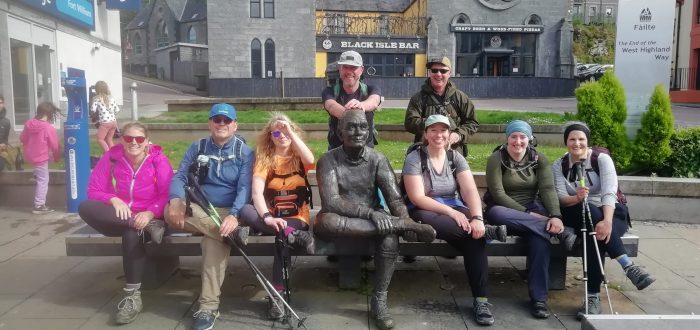
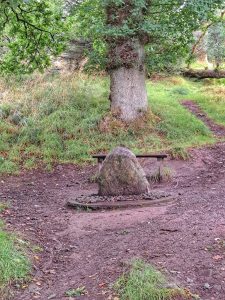
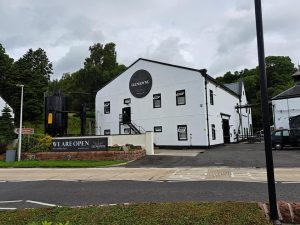
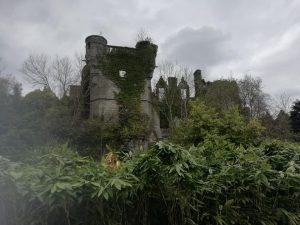
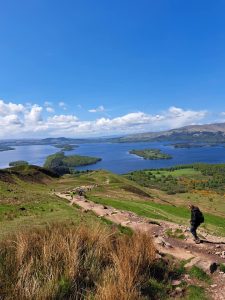
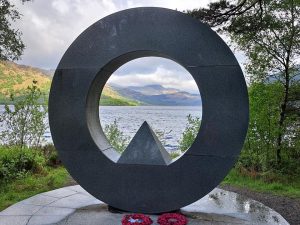
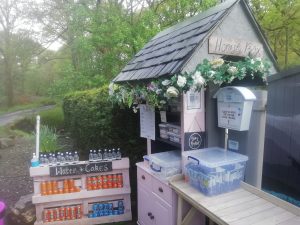
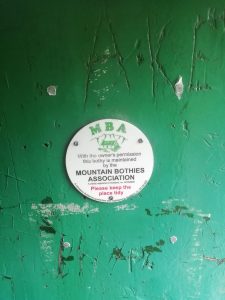
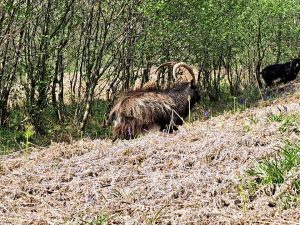
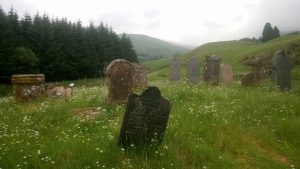
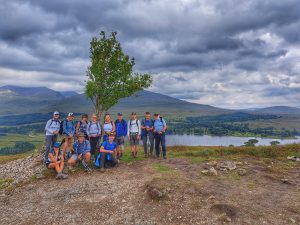
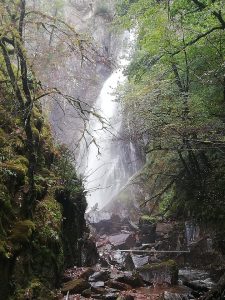
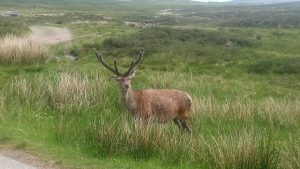
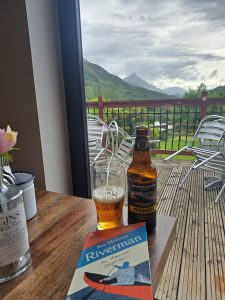
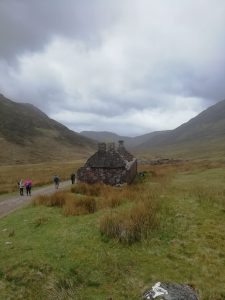
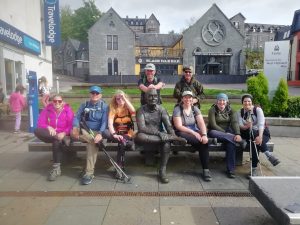
Ahh I miss it already Ian and it’s only November! Great article mate
Glad you enjoyed reading it. I am very much looking forward to getting back up to Scotland especially after the enforced rest and recovery!! Look forward to seeing you up there
Very comprehensive account. I’m sure that thr recommended pubs will tempt many😄
.
Ha ha, I think a visit to a good pub is an essential part of the walking experience and a great way to meet fellow walkers and locals!
Wow you certainly know your way around! Beautifully written to boot (pun intended!)
Ha ha! Thank you! It’s a great walk with so many things to see 🙂
Testimonials
Recent Posts
Categories
Recent Posts